Current Technical Approaches for the Early Detection of Foodborne Pathogens: Challenges and Opportunities
Abstract
:1. Introduction
2. Nanostructure-Based Approaches for Advanced Biosensors
3. Colorimetric Methods
4. Optical Methods
5. Magnetic Detection Methods
6. Electrochemical Detection Methods
7. Raman Spectroscopic Methods
8. Mass Spectroscopic Methods
9. Lateral-Flow Chromatographic Assay Methods
10. Pre-Treatment: Cell Separation, Concentration, and Recovery from Foods
11. Conclusions
Acknowledgments
Author Contributions
Conflicts of Interest
Abbreviations
| FDA | Food and Drug Administration |
| WHO | The World Health Organization |
| ELISA | Enzyme-linked immunosorbent assay |
| SA Health | South Australian Health of Government of South Australia |
| CFIA | Canadian Food Inspection Agency |
| PFS | Public Health Surveillance Information for New Zealand Public Health Action |
| EFSA | European Food Safety Authority |
| RASFF | Rapid Alert System for Food and Feed |
| CDC | Center for Disease Control and Prevention |
| MFDS | Ministry of Food and Drug Safety of South Korea |
| SPR | Surface plasmon resonance |
| SERS | Surface enhanced Raman spectroscopy |
| MOPS | 3-(N-morpholino)-propanesulfonic acid |
| NMR | Nuclear magnetic resonance |
| LOD | Limit of detection |
| LFA | Lateral flow chromatographic assays |
References
- Foodborne Illnesses: What You Need to Know. Available online: http://www.fda.gov/food/resourcesforyou/consumers/ucm103263.htm (accessed on 1 August 2016).
- Foodborne Germs and Illnesses. Available online: http://www.cdc.gov/foodsafety/foodborne-germs.html (accessed on 1 August 2016).
- Law, J.; Ab Mutalib, N.; Chan, K.; Lee, L. Rapid Methods for The Detection of Foodborne Bacterial Pathogens: Principles, Applications, Advantages and Limitations. Front. Microbiol. 2015, 5, 770. [Google Scholar] [CrossRef] [PubMed]
- Global Burden of Foodborne Diseases. Available online: http://www.who.int/foodsafety/areas_work/foodborne-diseases/ferg/en/ (accessed on 1 August 2016).
- Clais, S.; Boulet, G.; van Kerckhoven, M.; Lanckacker, E.; Delputte, P.; Maes, L.; Cos, P. Comparison of viable plate count, turbidity measurement and Real-Time PCR for quantification of Porphyromonas Gingivalis. Lett. Appl. Microbiol. 2014, 60, 79–84. [Google Scholar] [CrossRef] [PubMed]
- BAM: Detection and Enumeration of Listeria monocytogenes. Available online: http://www.fda.gov/Food/FoodScienceResearch/LaboratoryMethods/ucm071400.htm (accessed on 1 August 2016).
- Government of South Australia: SA Health: Public Health Warning Issued Following Salmonella Outbreak. Available online: https://www.productsafety.gov.au/system/files/recall/SA%20Health%20Media%20Release.pdf (accessed on 29 September 2017).
- Canadian Food Inspection Agency: Food Recall Warning: Ajinomoto Brand Yakitori Chicken with Japanese-Style Fried Rice Recalled Due to Listeria monocytogenes. Available online: http://www.marketwired.com/press-release/food-recall-warning-ajinomoto-brand-yakitori-chicken-with-japanese-style-fried-rice-2123029.htm (accessed on 1 August 2016).
- Public Health Surveillance. Available online: https://surv.esr.cri.nz/public_health_surveillance/public_health_surveillance.php (accessed on 29 September 2017).
- Multi-Country Outbreak of HUS Associated with STEC Infection. Available online: http://www.efsa.europa.eu/en/supporting/pub/1017e (accessed on 29 September 2017).
- Rapid Alert System for Food and Feed: RASFF Portal. Available online: https://webgate.ec.europa.eu/rasff-window/portal/?event=notificationDetail&NOTIF_REFERENCE=2016.1004 (accessed on 1 August 2016).
- Rapid Alert System for Food and Feed: RASFF Portal. Available online: https://webgate.ec.europa.eu/rasff-window/portal/?event=notificationDetail&NOTIF_REFERENCE=2016.0966 (accessed on 30 July 2016).
- Rapid Alert System for Food and Feed: RASFF Portal. Available online: https://webgate.ec.europa.eu/rasff-window/portal/?event=notificationDetail&NOTIF_REFERENCE=2016.BAM (accessed on 30 July 2016).
- Rapid Alert System for Food and Feed: RASFF Portal. Available online: https://webgate.ec.europa.eu/rasff-window/portal/?event=notificationDetail&NOTIF_REFERENCE=2016.0992 (accessed on 1 August 2016).
- Marini, E.; Magi, G.; Vincenzi, C.; Manso, E.; Facinelli, B. Ongoing outbreak of invasive listeriosis due to serotype 1/2a Listeria monocytogenes, Ancona province, Italy, January 2015 to February 2016. Eurosurveillance 2016. [Google Scholar] [CrossRef] [PubMed]
- WHO: Escherischia coli (E. coli) Outbreak in United Kingdom. Available online: http://www.euro.who.int/en/health-topics/disease-prevention/food-safety/news/news/2016/07/escherichia-coli-e.-coli-outbreak-in-united-kingdom (accessed on 1 August 2016).
- Multistate Outbreak of Listeriosis Linked to Frozen Vegetables. Available online: http://www.cdc.gov/listeria/outbreaks/frozen-vegetables-05-16/index.html (accessed on 1 August 2016).
- Multistate Outbreak of Shiga toxin-producing Escherichia coli O121 Infections Linked to Flour. Available online: http://www.cdc.gov/ecoli/2016/o121-06-16/index.html (accessed on 1 August 2016).
- Multistate Outbreak of Listeriosis Linked to Raw Milk Produced by Miller’s Organic Farm in Pennsylvania. Available online: http://www.cdc.gov/listeria/outbreaks/raw-milk-03-16/index.html (accessed on 1 August 2016).
- Multistate Outbreak of Salmonella Montevideo and Salmonella Senftenberg Infections Linked to Wonderful Pistachios. Available online: http://www.cdc.gov/salmonella/montevideo-03-16/index.html (accessed on 1 August 2016).
- Multistate Outbreak of Salmonella Muenchen Infections Linked to Alfalfa Sprouts Produced by Sweetwater Farms. Available online: http://www.cdc.gov/salmonella/muenchen-02-16/index.html (accessed on 1 August 2016).
- Multistate Outbreak of Listeriosis Linked to Packaged Salads Produced at Springfield, Ohio Dole Processing Facility. Available online: http://www.cdc.gov/listeria/outbreaks/bagged-salads-01-16/index.html (accessed on 1 August 2016).
- Ministry of Food and Drug Safety. Available online: https://www.foodsafetykorea.go.kr/portal/healthyfoodlife/foodPoisoningStat.do?menu_no=519&menu_grp=MENU_GRP02 (accessed on 1 August 2016).
- Fan, C.; Tamiya, E. Editorial: Translating the Advances of Biosensors from Bench to Bedside. J. Biotechnol. 2016, 11, 727–728. [Google Scholar] [CrossRef] [PubMed]
- Biosensors and Bioelectronics. Available online: http://www.journals.elsevier.com/biosensors-and-bioelectronics/ (accessed on 1 August2016).
- Lai, S.; O'Hanlon, D.; Harrold, S.; Man, S.; Wang, Y.; Cone, R.; Hanes, J. Rapid Transport of Large Polymeric Nanoparticles In Fresh Undiluted Human Mucus. Proc. Natl. Acad. Sci. USA 2007, 104, 1482–1487. [Google Scholar] [CrossRef] [PubMed]
- Li, F.; Li, Y.; Feng, J.; Dong, Y.; Wang, P.; Chen, L.; Chen, Z.; Liu, H.; Wei, Q. Ultrasensitive amperometric immunosensor for PSA detection based on Cu2O@CeO2-Au nanocomposites as integrated triple signal amplification strategy. Biosens. Bioelectron. 2017, 87, 630–637. [Google Scholar] [CrossRef] [PubMed]
- Lee, N.; Jung, Y.; Park, H. On-Chip Colorimetric Biosensor Based on Polydiacetylene (PDA) Embedded in Photopolymerized Poly(Ethylene Glycol) Diacrylate (PEG-DA) Hydrogel. Biochem. Eng. J. 2006, 29, 103–108. [Google Scholar] [CrossRef]
- Jia, H.; Yang, D.; Han, X.; Cai, J.; Liu, H.; He, W. Peroxidase-like activity of the Co3O4 nanoparticles used for biodetection and evaluation of antioxidant behavior. Nanoscale 2016, 8, 5938–5945. [Google Scholar] [CrossRef] [PubMed]
- He, W.; Zhou, Y.; Wamer, W.; Hu, X.; Wu, X.; Zheng, Z.; Boudreau, M.; Yin, J. Intrinsic catalytic activity of au nanoparticles with respect to hydrogen peroxide decomposition and superoxide scavenging. Biomaterials 2013, 34, 765–773. [Google Scholar] [CrossRef] [PubMed]
- Liu, J.; Hu, X.; Hou, S.; Wen, T.; Liu, W.; Zhu, X.; Yin, J.; Wu, X. Au@ Pt core/shell nanorods with peroxidase-and ascorbate oxidase-like activities for improved detection of glucose. Sens. Actuators B Chem. 2012, 166, 708–714. [Google Scholar] [CrossRef]
- Su, H.; Zhao, H.; Qiao, F.; Chen, L.; Duan, R.; Ai, S. Colorimetric Detection of Escherichia Coli O157:H7 using functionalized Au@Pt nanoparticles as peroxidase mimetics. Analyst 2013, 138, 3026–3031. [Google Scholar] [CrossRef] [PubMed]
- Miranda, O.; Li, X.; Garcia-Gonzalez, L.; Zhu, Z.; Yan, B.; Bunz, U.; Rotello, V. Colorimetric bacteria sensing using a supramolecular enzyme–nanoparticle biosensor. J. Am. Chem. Soc. 2011, 133, 9650–9653. [Google Scholar] [CrossRef] [PubMed]
- Qiu, S.; Lin, Z.; Zhou, Y.; Wang, D.; Yuan, L.; Wei, Y.; Dai, T.; Luo, L.; Chen, G. Highly selective colorimetric bacteria sensing based on protein-capped nanoparticles. Analyst 2015, 140, 1149–1154. [Google Scholar] [CrossRef] [PubMed]
- Thavanathan, J.; Huang, N.; Thong, K. Colorimetric Biosensing of targeted gene sequence using dual nanoparticle platforms. Int. J. Nanomed. 2015, 10, 2711–2722. [Google Scholar]
- ISO 6579:2002—Microbiology of Food and Animal Feeding Stuffs—Horizontal Method for the Detection of Salmonella spp. Available online: http://www.iso.org/iso/catalogue_detail.htm?csnumber=29315 (accessed on 2 August 2016).
- Ministry of Food and Drug Safety of South Korea. Available online: http://www.foodsafetykorea.go.kr/foodcode/menu_01_03.jsp?idx=378 (accessed on 2 August 2016).
- WHO Global Foodborne Infections Network. Available online: http://www.antimicrobialresistance.dk/data/images/protocols/isolation_of_salm_220610.pdf (accessed on 2 August 2016).
- Isolation and Identification of Salmonella From Meat, Poultry, Pasteurized Egg, and Catfish Products and Carcass and Environmental Sponges. Available online: http://www.fsis.usda.gov/wps/wcm/connect/b0790997-2e74-48bf-9799-85814bac9ceb/28_IM_PR_Sal_Campy.pdf?MOD=AJPERES (accessed on 2 August 2016).
- Cho, I.H.; Irudayaraj, J. In-Situ immuno-gold nanoparticle network ELISA biosensors for pathogen detection. Int. J. Food Microbiol. 2013, 64, 70–75. [Google Scholar] [CrossRef] [PubMed]
- Lim, S.; Koo, O.; You, Y.; Lee, Y.; Kim, M.; Chang, P.; Kang, D.; Yu, J.; Choi, Y.; Gunasekaran, S. Enhancing nanoparticle-based visible detection by controlling the extent of aggregation. Sci. Rep. 2012, 2, 456. [Google Scholar] [CrossRef] [PubMed]
- Shaner, N.; Lin, M.; McKeown, M.; Steinbach, P.; Hazelwood, K.; Davidson, M.; Tsien, R. Improving the photostability of bright monomeric orange and red fluorescent proteins. Nat. Methods 2008, 5, 545–551. [Google Scholar] [CrossRef] [PubMed]
- Dudak, F.; Boyacı, I. Rapid and label-free bacteria detection by surface plasmon resonance (SPR) Biosensors. Biotechnol. J. 2009, 4, 1003–1011. [Google Scholar] [CrossRef] [PubMed]
- Wang, Y.; Lee, K.; Irudayaraj, J. Silver nanosphere SERS probes for sensitive identification of pathogens. J. Phys. Chem. C 2010, 114, 16122–16128. [Google Scholar] [CrossRef]
- Xu, X.; Chen, Y.; Wei, H.; Xia, B.; Liu, F.; Li, N. Counting bacteria using functionalized gold nanoparticles as the light-scattering reporter. Anal. Chem. 2012, 84, 9721–9728. [Google Scholar] [CrossRef] [PubMed]
- Phillips, R.; Miranda, O.; You, C.; Rotello, V.; Bunz, U. Rapid and efficient identification of bacteria using Gold-Nanoparticle–Poly(Para-Phenyleneethynylene) constructs. Angew. Chem. Int. Ed. 2008, 47, 2590–2594. [Google Scholar] [CrossRef] [PubMed]
- El-Boubbou, K.; Gruden, C.; Huang, X. Magnetic Glyco-Nanoparticles: A Unique Tool for Rapid Pathogen Detection, Decontamination, and Strain Differentiation. J. Am. Chem. Soc. 2007, 129, 13392–13393. [Google Scholar] [CrossRef] [PubMed]
- Gu, H.; Ho, P.; Tsang, K.; Wang, L.; Xu, B. Using biofunctional magnetic nanoparticles to capture vancomycin-resistant enterococci and other gram-positive bacteria at ultralow concentration. J. Am. Chem. Soc. 2003, 125, 15702–15703. [Google Scholar] [CrossRef] [PubMed]
- Chen, L.; Razavi, F.; Mumin, A.; Guo, X.; Sham, T.; Zhang, J. Multifunctional nanoparticles for rapid bacterial capture, detection, and decontamination. RSC Adv. 2013, 3, 2390–2397. [Google Scholar] [CrossRef]
- Cho, I.; Mauer, L.; Irudayaraj, J. In-situ fluorescent immunomagnetic multiplex detection of foodborne pathogens in very low numbers. Biosensors and bioelectronics. Biosens. Bioelectron. 2014, 57, 143–148. [Google Scholar] [CrossRef] [PubMed]
- Kaittanis, C.; Naser, S.; Perez, J. One-step, nanoparticle-mediated bacterial detection with magnetic relaxation. Nano Lett. 2007, 7, 380–383. [Google Scholar] [CrossRef] [PubMed]
- Lee, H.; Yoon, T.; Weissleder, R. Ultrasensitive detection of bacteria using core-shell nanoparticles and an NMR-filter system. Angew. Chem. 2009, 121, 5767–5770. [Google Scholar] [CrossRef]
- Ricci, F.; Adornetto, G.; Palleschi, G. A review of experimental aspects of electrochemical immunosensors. Electrochim. Acta 2012, 84, 74–83. [Google Scholar] [CrossRef]
- Doria, G.; Conde, J.; Veigas, B.; Giestas, L.; Almeida, C.; Assunção, M.; Rosa, J.; Baptista, P. Noble metal nanoparticles for biosensing applications. Sensors 2012, 12, 1657–1687. [Google Scholar] [CrossRef] [PubMed]
- Varshney, M.; Li, Y. Interdigitated Array Microelectrode based Impedance Biosensor Coupled with Magnetic Nanoparticle–Antibody Conjugates for Detection of Escherichia Coli O157:H7 in Food Samples. Biosens. Bioelectron. 2007, 22, 2408–2414. [Google Scholar] [CrossRef] [PubMed]
- CDC Online Newsroom. Available online: https://www.cdc.gov/media/releases/2013/p0516-pool-contamination.html (accessed on 15 August 2016).
- BAM: Diarrheagenic Escherichia coli. Available online: http://www.fda.gov/Food/FoodScienceResearch/LaboratoryMethods/ucm070080.htm (accessed on 15 August 2016).
- Xu, D.; Watt, G.; Harb, J.; Davis, R. Electrical conductivity of ferritin proteins by conductive AFM. Nano Lett. 2005, 5, 571–577. [Google Scholar] [CrossRef] [PubMed]
- Zhang, X.; Shao, J.; Jiang, S.; Wang, B.; Zheng, Y. Structure-dependent electrical conductivity of protein: Its differences between α-domain and β-domain structures. Nanotechnology 2015, 26, 125702. [Google Scholar] [CrossRef] [PubMed]
- Setterington, E.; Alocilja, E. Electrochemical biosensor for rapid and sensitive detection of magnetically extracted bacterial pathogens. Biosensors 2012, 2, 15–31. [Google Scholar] [CrossRef] [PubMed]
- Afonso, A.; Pérez-López, B.; Faria, R.; Mattoso, L.; Hernández-Herrero, M.; Roig-Sagués, A.; Maltez-da Costa, M.; Merkoçi, A. Electrochemical detection of Salmonella using gold nanoparticles. Biosens. Bioelectron. 2013, 40, 121–126. [Google Scholar] [CrossRef] [PubMed]
- Wang, H.; Zhang, Y.; Wang, Y.; Ma, H.; Du, B.; Wei, Q. Facile synthesis of cuprous oxide nanowires decorated graphene oxide nanosheets nanocomposites and its application in label-free electrochemical immunosensor. Biosens. Bioelectron. 2017, 87, 745–751. [Google Scholar] [CrossRef] [PubMed]
- Chen, J.; Andler, S.M.; Goddard, J.M.; Nugen, S.R.; Rotello, V.M. Integrating recognition elements with nanomaterials for bacteria sensing. Chem. Soc. Rev. 2017, 46, 1272–1283. [Google Scholar] [CrossRef] [PubMed]
- Sanchez-Tirado, E.; Gonzalez-Cortes, A.; Yanez-Sedeno, P.; Pingarron, J.M. Carbon nanotubes functionalized by click chemistry as scaffolds for the preparation of electrochemical immunosensors. Application to the determination of TGF-β 1 cytokine. Analyst 2016, 141, 5730–5737. [Google Scholar] [CrossRef] [PubMed]
- Tlili, C.; Cella, L.N.; Myung, N.V.; Shetty, V.; Mulchandani, A. Single-walled carbon nanotube chemoresistive label-free immunosensor for salivary stress biomarkers. Analyst 2010, 135, 2637–2642. [Google Scholar] [CrossRef] [PubMed]
- Kuila, T.; Bose, S.; Khanra, P.; Mishra, A.K.; Kim, N.H.; Lee, J.H. Recent advances in graphene-based biosensors. Biosens. Bioelectron. 2011, 26, 4637–4648. [Google Scholar] [CrossRef] [PubMed]
- Cao, X.; Liu, S.; Feng, Q.; Wang, N. Silver nanowire-based electrochemical immunoassay for sensing immunoglobulin G with signal amplification using strawberry-like ZnO nanostructures as labels. Biosens. Bioelectron. 2013, 49, 256–262. [Google Scholar] [CrossRef] [PubMed]
- He, B.; Morrow, T.J.; Keating, C.D. Nanowire sensors for multiplexed detection of biomolecules. Curr. Opin. Chem. Biol. 2008, 12, 522–528. [Google Scholar] [CrossRef] [PubMed]
- Craig, A.; Franca, A.; Irudayaraj, J. Surface-enhanced Raman spectroscopy applied to food safety. Annu. Rev. Food Sci. Technol. 2013, 4, 369–380. [Google Scholar] [CrossRef] [PubMed]
- Popp, J. Identification of micro-organisms by Raman spectroscopy. Spie Newsroom. 2007. [Google Scholar] [CrossRef]
- Pahlow, S.; Meisel, S.; Cialla-May, D.; Weber, K.; Rösch, P.; Popp, J. Isolation and identification of bacteria by means of Raman spectroscopy. Adv. Drug Deliv. Rev. 2015, 89, 105–120. [Google Scholar] [CrossRef] [PubMed]
- Sattler, K. Handbook of Nanophysics: Nanoelectronics and Nanophotonics; CRC Press: Boca Raton, FL, USA, 2011; pp. 28–35. [Google Scholar]
- Ravindranath, S.; Wang, Y.; Irudayaraj, J. SERS driven cross-platform based multiplex pathogen detection. Sens. Actuators B Chem. 2011, 152, 183–190. [Google Scholar] [CrossRef]
- Singhal, N.; Kumar, M.; Kanaujia, P.; Virdi, J. MALDI-TOF mass spectrometry: An emerging technology for microbial identification and diagnosis. Front. Microbiol. 2015, 6, 791. [Google Scholar] [CrossRef] [PubMed]
- Seng, P.; Drancourt, M.; Gouriet, F.; La Scola, B.; Fournier, P.; Rolain, J.; Raoult, D. ongoing revolution in bacteriology: Routine identification of bacteria by matrix-assisted laser desorption ionization time-of-flight mass spectrometry. Clin. Infect. Dis. 2009, 49, 543–551. [Google Scholar] [CrossRef] [PubMed]
- Chiang, C.; Chiang, M.; Lin, Z.; Lan, G.; Lin, Y.; Chang, H. Nanomaterial-based surface-assisted laser desorption/ionization mass spectrometry of peptides and proteins. J. Am. Soc. Mass Spectrom. 2010, 21, 1204–1207. [Google Scholar] [CrossRef] [PubMed]
- Ahmad, F.; Siddiqui, M.; Babalola, O.; Wu, H. Biofunctionalization of nanoparticle assisted mass spectrometry as biosensors for rapid detection of plant associated bacteria. Biosens. Bioelectron. 2012, 35, 235–242. [Google Scholar] [CrossRef] [PubMed]
- Cho, I.; Paek, E.; Kim, Y.; Kim, J.; Paek, S. Chemiluminometric enzyme-linked immunosorbent assays (ELISA)-on-a-chip biosensor based on cross-flow chromatography. Anal. Chim. Acta 2009, 632, 247–255. [Google Scholar] [CrossRef] [PubMed]
- Cho, I.; Radadia, A.; Farrokhzad, K.; Ximenes, E.; Bae, E.; Singh, A.; Oliver, H.; Ladisch, M.; Bhunia, A.; Applegate, B.; et al. Nano/Micro and spectroscopic approaches to food pathogen detection. Annu. Rev. Anal. Chem. 2014, 7, 65–88. [Google Scholar] [CrossRef] [PubMed]
- Cho, I.; Bhunia, A.; Irudayaraj, J. Rapid pathogen detection by lateral-flow immunochromatographic assay with gold nanoparticle-assisted enzyme signal amplification. Int. J. Food Microbiol. 2015, 206, 60–66. [Google Scholar] [CrossRef] [PubMed]
- Li, X.; Luo, P.; Tang, S.; Beier, R.C.; Wu, X.; Yang, L.; Li, Y.; Xiao, X. Development of an immunochromatographic strip test for rapid detection of melamine in raw milk, milk products and animal feed. J. Agric. Food Chem. 2011, 59, 6064–6070. [Google Scholar] [CrossRef] [PubMed]
- Liu, L.Q.; Luo, L.J.; Suryoprabowo, S.; Peng, J.; Kuang, H.; Xu, C.L. Development of an immunochromatographic strip test for rapid detection of ciprofloxacin in milk samples. Sensors 2014, 14, 16785–16798. [Google Scholar] [PubMed]
- Zhang, X.; Wu, C.; Wen, K.; Jiang, H.; Shen, J.; Zhang, S.; Wang, Z. Comparison of fluorescent microspheres and colloidal gold as labels in lateral flow immunochromatographic assays for the detection of T-2 toxin. Molecules 2016, 21, 27. [Google Scholar] [CrossRef] [PubMed]
- Pengsuk, C.; Chaivisuthangkura, P.; Longyant, S.; Sithigorngul, P. Development and evaluation of a highly sensitive immunochromatographic strip test using gold nanoparticle for direct detection of vibrio cholerae O139 in seafood samples. Biosens. Bioelectron. 2013, 42, 229–235. [Google Scholar] [CrossRef] [PubMed]
- Cho, I.; Irudayaraj, J. Lateral-flow enzyme immunoconcentration for rapid detection of listeria monocytogenes. Anal. Bioanal. Chem. 2013, 405, 3313–3319. [Google Scholar] [CrossRef] [PubMed]
- Ho, J.; Zeng, S.; Tseng, W.; Lin, Y.; Chen, C. Liposome-based immunostrip for the rapid detection of Salmonella. Anal. Bioanal. Chem. 2008, 391, 479–485. [Google Scholar] [CrossRef] [PubMed]
- Shukla, S.; Leem, H.; Kim, M. Development of a liposome-based immunochromatographic strip assay for the detection of Salmonella. Anal. Bioanal. Chem. 2011, 401, 2581–2590. [Google Scholar] [CrossRef] [PubMed]
- Lutz, B.; Liang, T.; Fu, E.; Ramachandran, S.; Kauffman, P.; Yager, P. Dissolvable fluidic time delays for programming multi-step assays in instrument-free paper diagnostics. Lab Chip 2013, 13, 2840. [Google Scholar] [CrossRef] [PubMed]
- Posthuma-Trumpie, G.; Korf, J.; van Amerongen, A. lateral flow (immuno) assay: Its strengths, weaknesses, opportunities and threats. A literature survey. Anal. Bioanal. Chem. 2008, 393, 569–582. [Google Scholar] [CrossRef] [PubMed]
- Sajid, M.; Kawde, A.; Daud, M. Designs, Formats and applications of lateral flow assay: A literature review. J. Saudi Chem. Soc. 2015, 19, 689–705. [Google Scholar] [CrossRef]
- Li, X. Improved Detection Techniques for Foodborne Pathogens: Separation Techniques Using Crossflow Microfiltration. Ph.D. Thesis, Purdue University, West Lafayette, IN, USA, 2014. [Google Scholar]
- Ku, S. Rapid Salmonella Concentration, Recovery and Detection from Food Samples. Ph.D. Thesis, Purdue University, West Lafayette, IN, USA, 2015. [Google Scholar]
- FDA Food Safety Challenge Winners Develop Innovative Technologies to Detect Salmonella. Available online: https://www.fda.gov/NewsEvents/Newsroom/PressAnnouncements/ucm455660.htm (accessed on 5 June 2017).
- Ku, S.; Ximenes, E.; Kreke, T.; Foster, K.; Deering, A.; Ladisch, M. Microfiltration of enzyme treated egg whites for accelerated detection of viable Salmonella. Biotechnol. Prog. 2016, 32, 1464–1471. [Google Scholar] [CrossRef] [PubMed]
- Ku, S.; Ximenes, E.; Kreke, T.; Ladisch, M. Salmonella in shell eggs: Mechanisms, prevention and detection. J. Nutr. Food Sci. 2016, 6, 455. [Google Scholar] [CrossRef]
- Ku, S.; Kreke, T.; Ximenes, E.; Foster, K.; Liu, X.; Gilpin, C.; Ladisch, M. Protein particulate retention and microorganism recovery for rapid detection of Salmonella. Biotechnol. Prog. 2017, 33, 687–695. [Google Scholar] [CrossRef] [PubMed]
- Li, X.; Ximenes, E.; Amalaradjou, M.; Vibbert, H.; Foster, K.; Jones, J.; Liu, X.; Bhunia, A.; Ladisch, M. Rapid sample processing for detection of food-borne pathogens via cross-flow microfiltration. Appl. Environ. Microbiol. 2013, 79, 7048–7054. [Google Scholar] [CrossRef] [PubMed]
- Vibbert, H.; Ku, S.; Li, X.; Liu, X.; Ximenes, E.; Kreke, T.; Ladisch, M.; Deering, A.; Gehring, A. Accelerating sample preparation through enzyme-assisted microfiltration of Salmonella in chicken extract. Biotechnol. Prog. 2015, 31, 1551–1562. [Google Scholar] [CrossRef] [PubMed]
- Ximenes, E.; Hoagland, L.; Ku, S.; Li, X.; Ladisch, M. Human pathogens in plant biofilms: Formation, physiology, and detection. Biotechnol. Bioeng. 2017, 114, 1403–1418. [Google Scholar] [CrossRef] [PubMed]
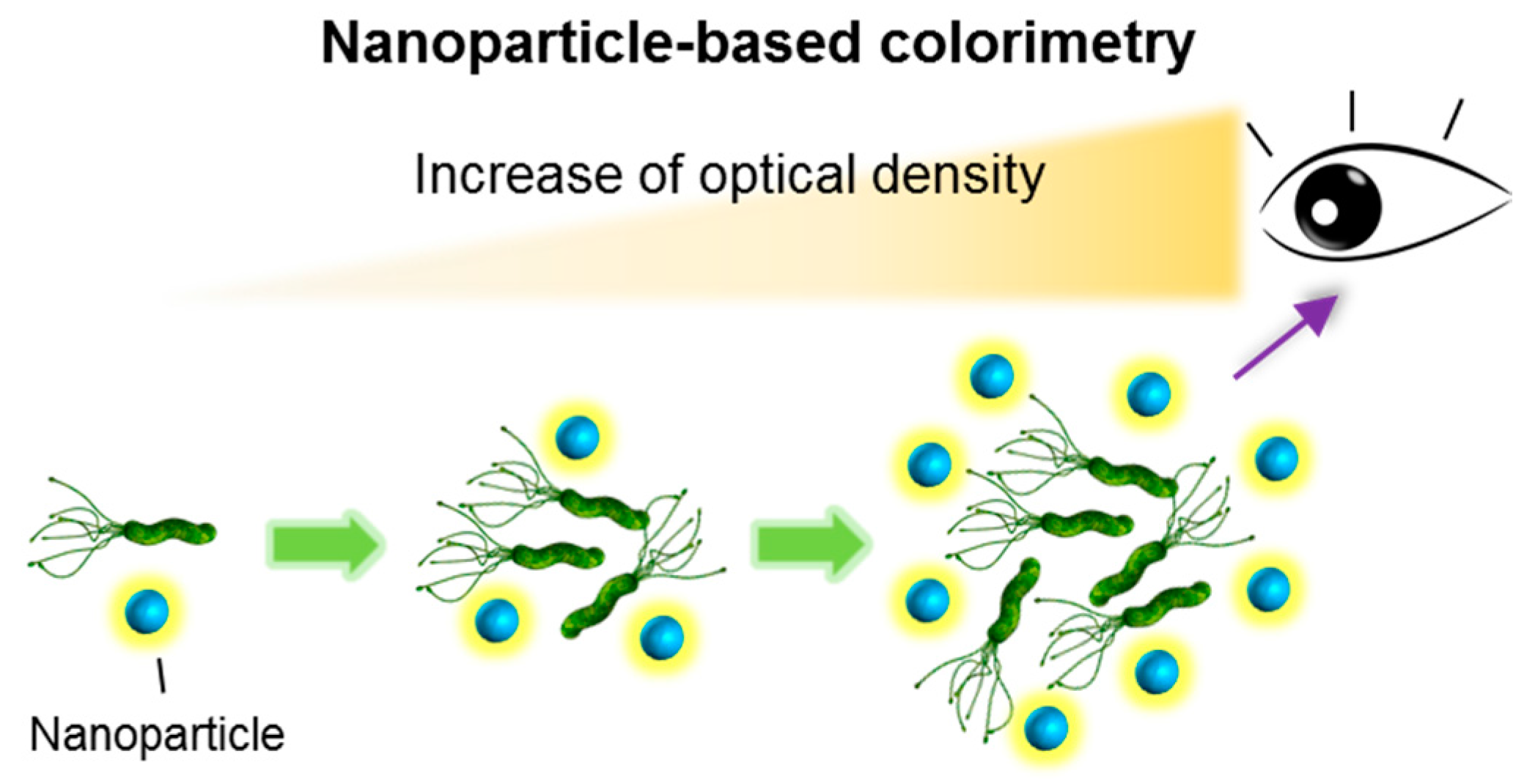
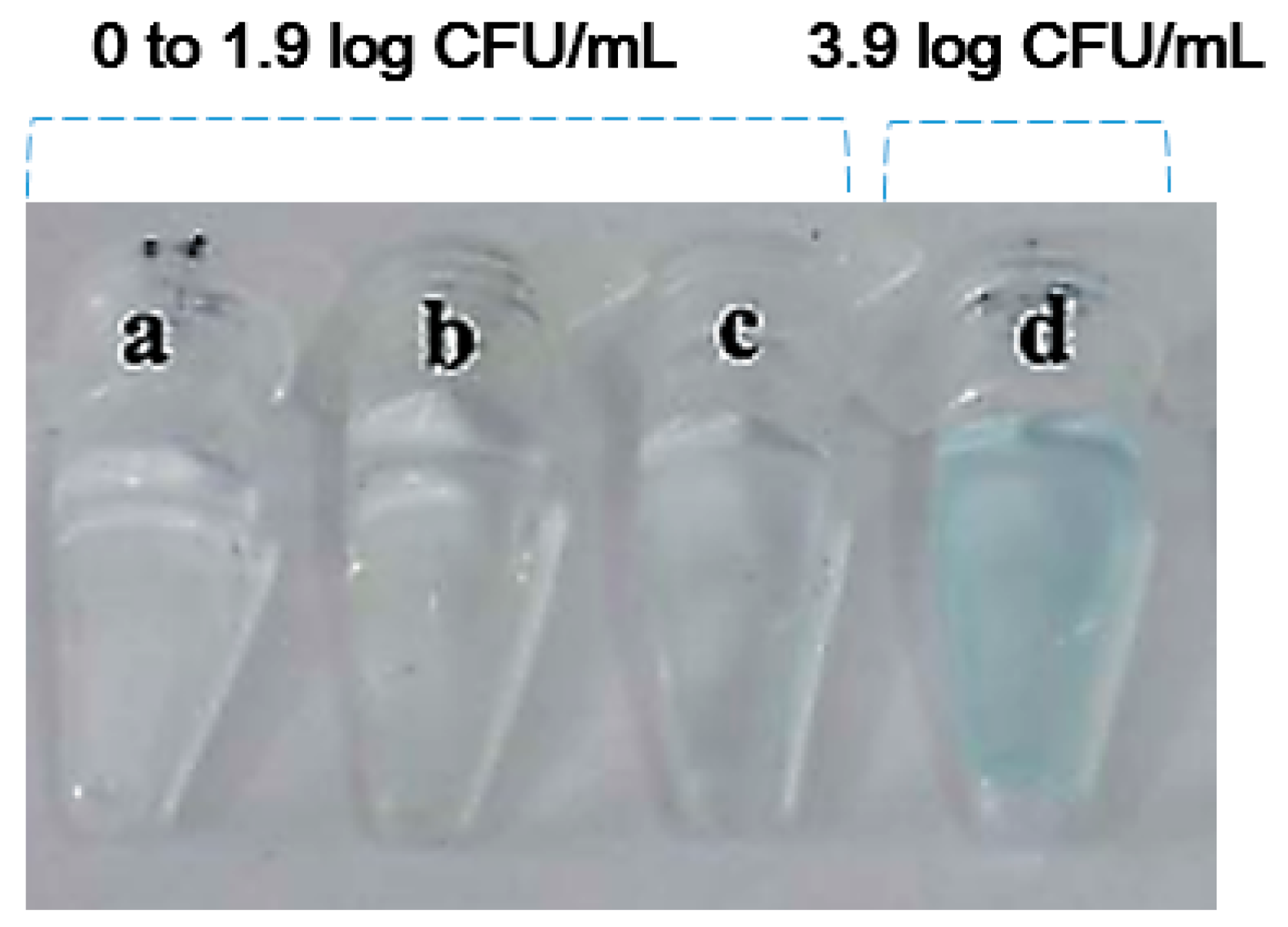
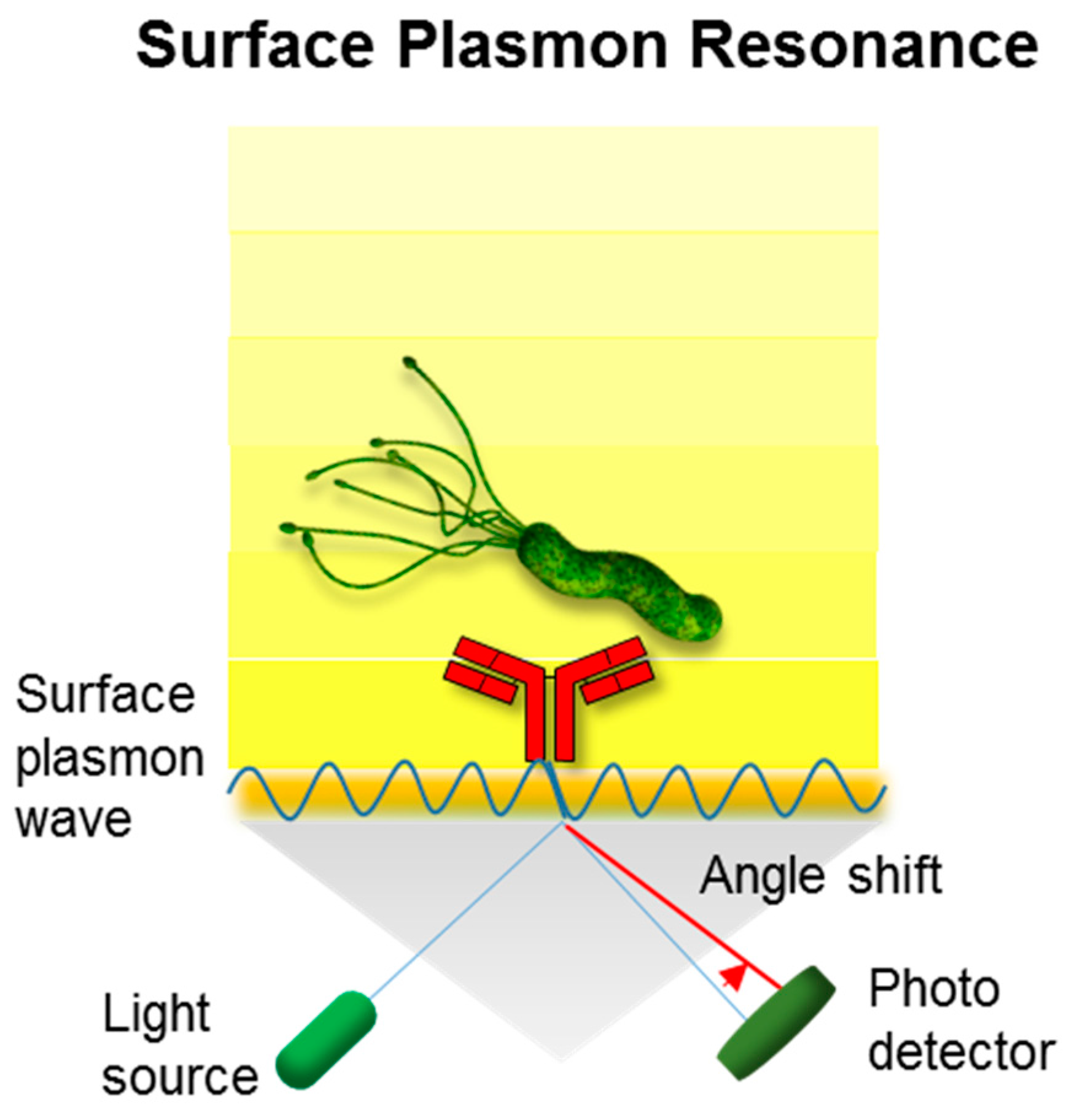
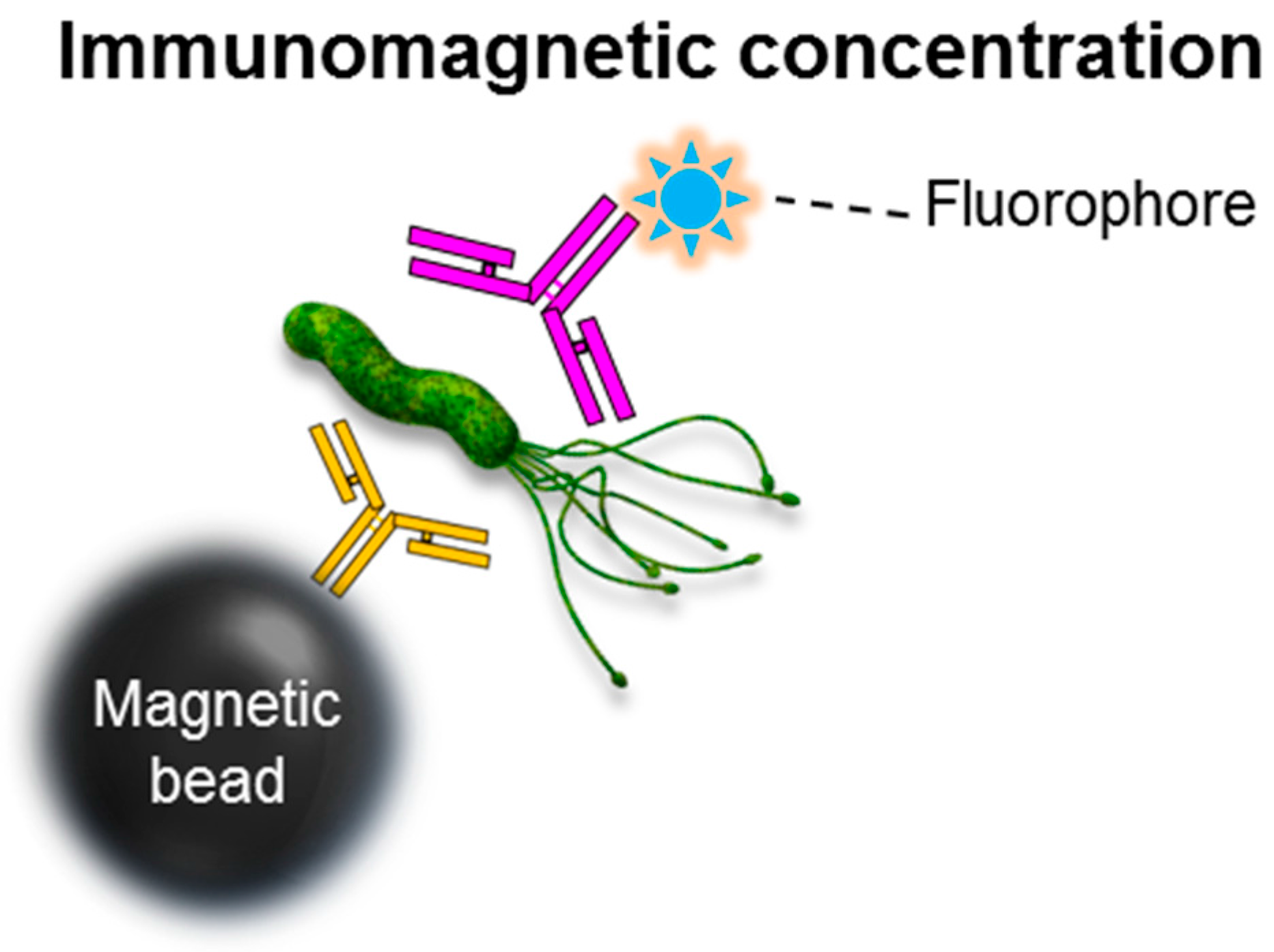
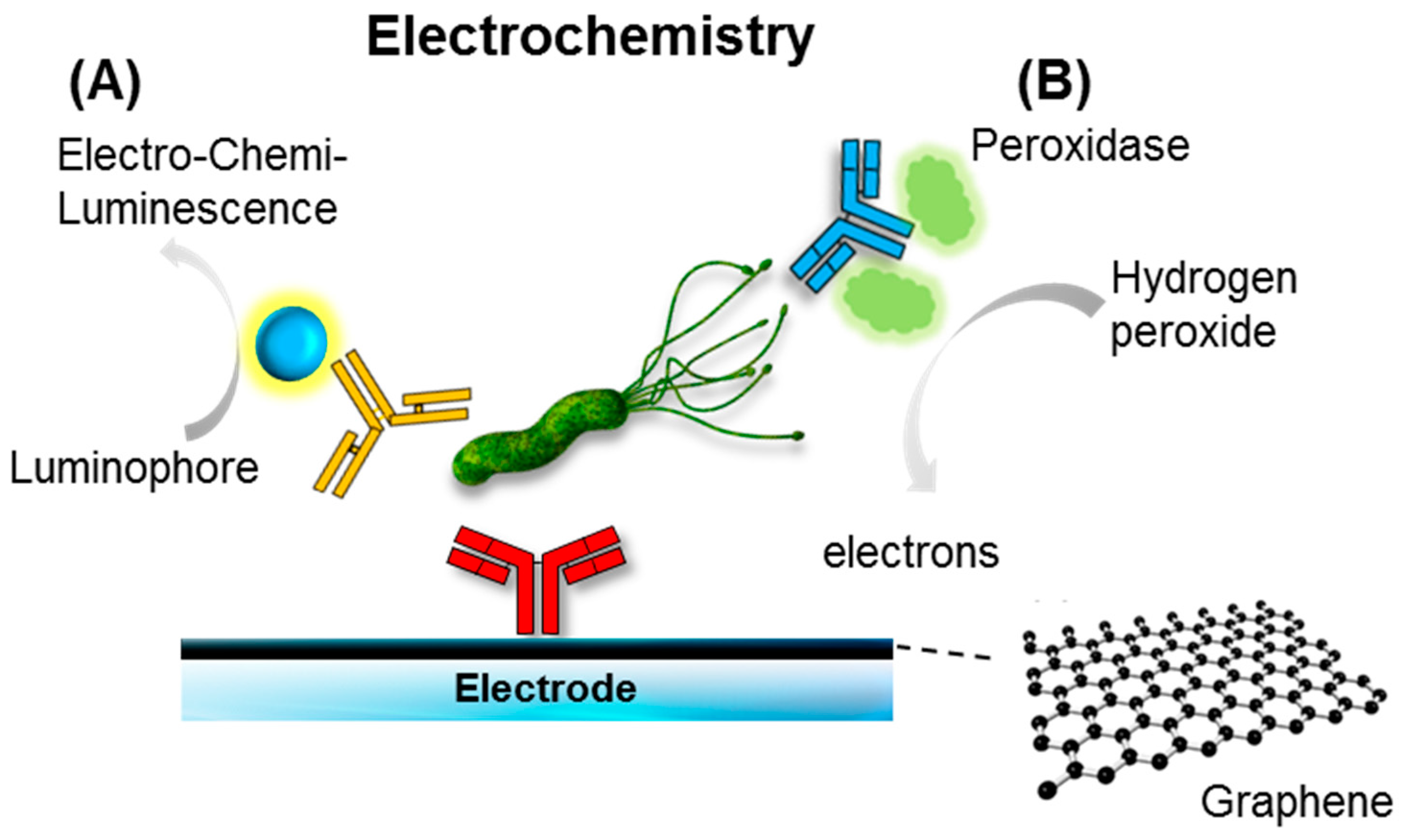
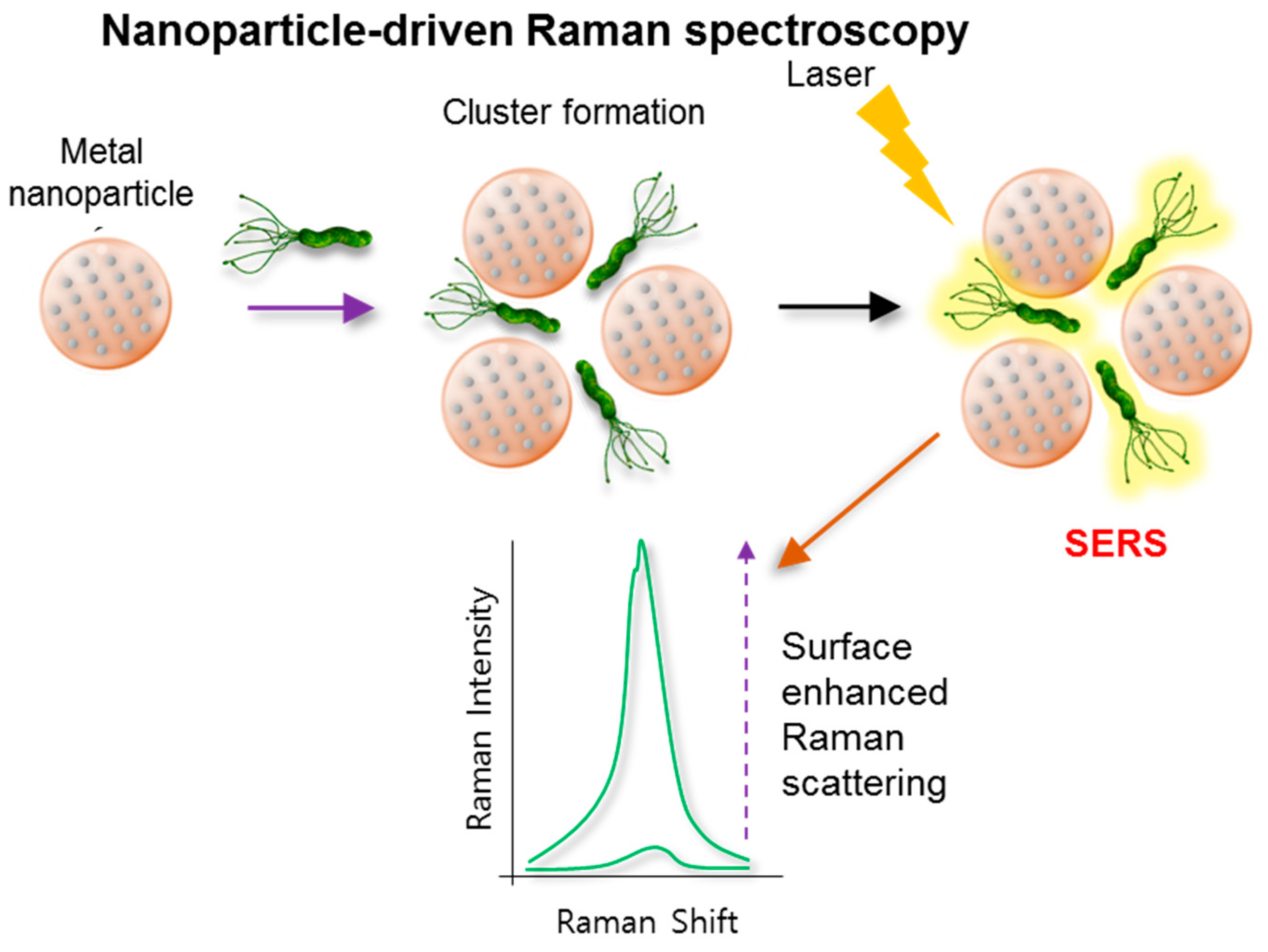
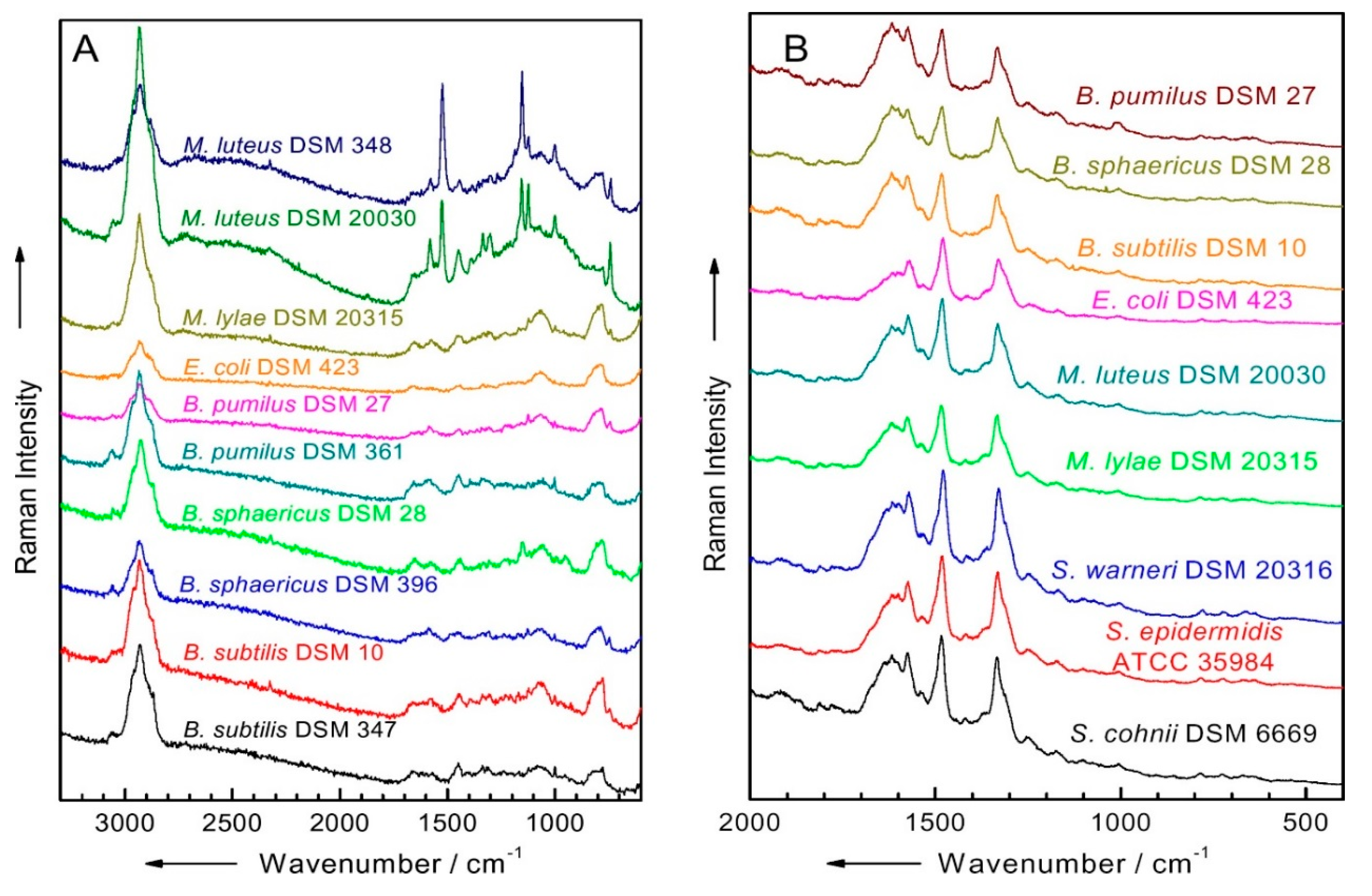
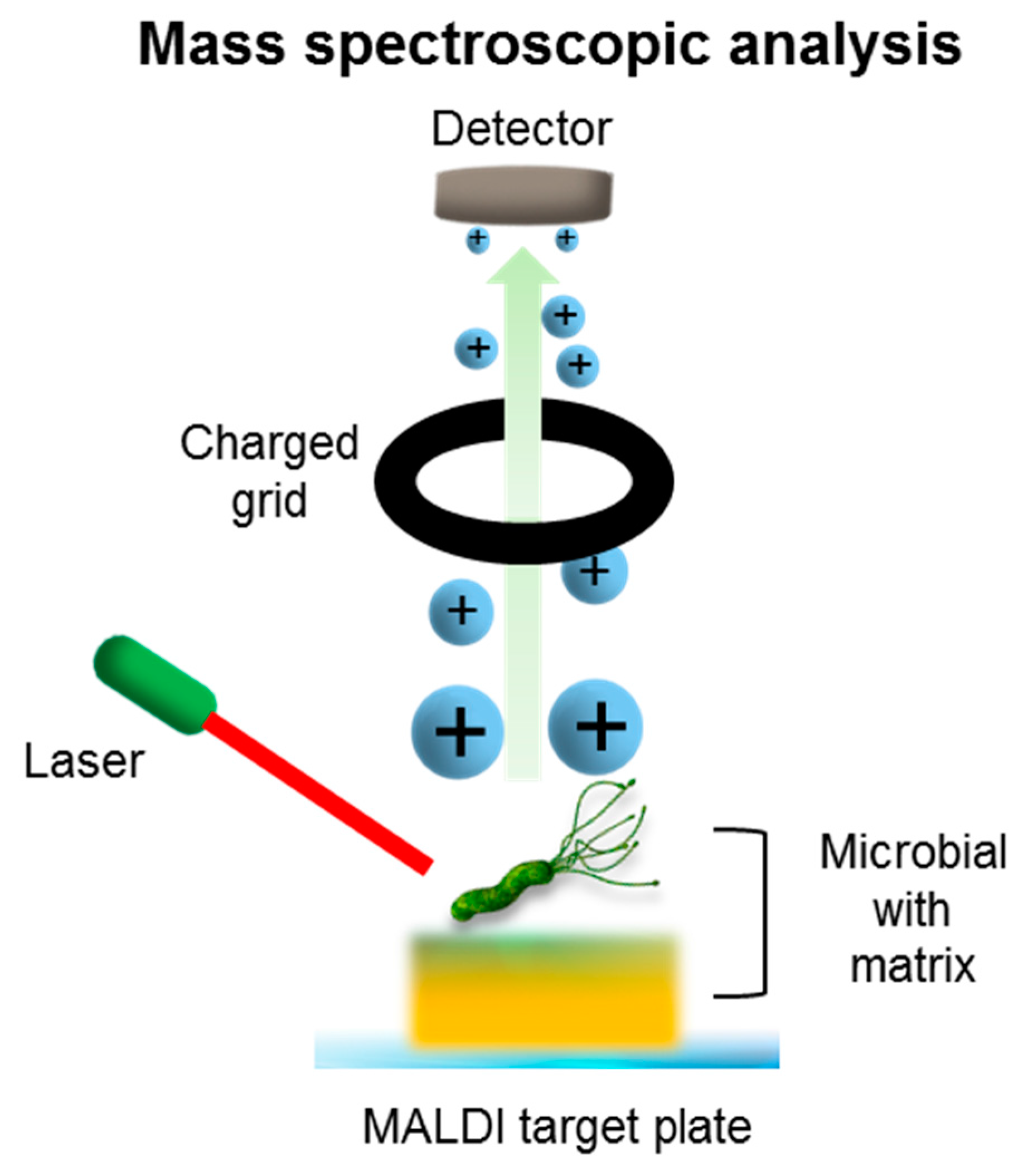


| Food | Pathogen | Country | Reference |
|---|---|---|---|
| Beansprouts | S. Saintpaul | Australia | SA Health 1 [7] |
| Processed foods | Listeria monocytogenes | Canada | CFIA 2 [8] |
| N/S4 | Salmonella spp. | New Zealand | PHS 3 [9] |
| Milk | E. coli | Romania | EFSA 5 [10] |
| Sliced chicken fillet | Listeria monocytogenes | France | RASFF 6 [11] |
| Smoked salmon | Listeria monocytogenes | Germany | RASFF [12] |
| Shrimp Sushi | Vibrio cholerae | Norway | RASFF [13] |
| Chicken breast | Salmonella enteritidis | Czech Republic | RASFF [14] |
| Unknown | Listeria monocytogenes | Italy | Eurosurveillance [15] |
| Mixed salad | E. coli | UK | WHO 7 [16] |
| Frozen Vegetables | Listeria monocytogenes | USA | CDC 8 [17] |
| Flour | E. coli | USA | CDC [18] |
| Raw milk | Listeria monocytogenes | USA | CDC [19] |
| Pistachios | Salmonella Montevideo | USA | CDC [20] |
| Alfalfa sprouts | Salmonella spp. | USA | CDC [21] |
| Packaged salads | Listeria monocytogenes | USA | CDC [22] |
| N/S | Clostridium perfringens | Korea | MFDS 9 [23] |
| N/S | E. coli | Korea | MFDS [23] |
| N/S | Norovirus | Korea | MFDS [23] |
| Target Microorganism | Detection Limit (CFU/mL) | Detection Time (min) | Aqueous Solution | References |
|---|---|---|---|---|
| E. coli O157:H7 | <7 log | 40 | Water | Su et al. [32] |
| E. coli (XL1) | >2 log | 5 | Phosphate buffer | Miranda et al. [33] |
| B. subtilis | 4.5 × 3 log | D/N 1 | MOPS buffer | Qiu et al. [34] |
| S. enterica | 5 log | 0.5 2 | Food homogenates | Thavanathan et al. [35] |
| E. coli O157:H7 | <10 | 120 | Three food types 3 | Cho and Irudayaraj [40] |
| S. typhimurium | <10 | 120 | Three foods types 3 | Cho and Irudayaraj [40] |
| E. coli | 2 log | >180 | PBS 4 | Lim et al. [41] |
| No# | Lateral Flow Assay Weaknesses |
|---|---|
| 1 | Difficulty of controlling capillary reaction |
| 2 | Necessity for lengthy pretreatment or cell enrichment time |
| 3 | Variation of molecular affinities and cross-reactivity |
| 4 | Imprecise sample volume reduces precision |
| 5 | Test volume restrictions limit sensitivity |
| 6 | One-step format lacks possibility to enhance the response via enzyme reaction |
| 7 | Obligatory antibody preparation or hybridization of nucleic acid sequence |
| 8 | Usually designed for individual tests, not for high-throughput screening |
| 9 | Obstruction of pores due to matrix components |
| 10 | Immunostrips usually not manufactured for this purpose |
| 11 | Obligatory sample pretreatment when the sample is not a fluid |
| 12 | Reproducibility varies |
| 13 | Response is negatively correlated to the concentration of a competitive format |
| 14 | Qualitative or semi-quantitative results |
| No# | Noteworthy Factors |
|---|---|
| 1 | The pretreated sample must be compatible with conventional or up-to-date detection methods. |
| 2 | It should be possible to shorten the total experiment time compared to the existing pre-enrichment procedure. |
| 3 | There should be little influence on the microorganisms’ growth. |
| 4 | The level of inhibitors present in the food and/or food homogenates should be minimized after pretreatment. |
| 5 | The method should ensure the effective isolation and recovery of target microorganisms from food surfaces or interiors. |
| 6 | The sample weight or buffer amount specified by regulatory organizations (e.g., ISO, USDA, and FDA) should be followed when performing the pretreatment. |
© 2017 by the authors. Licensee MDPI, Basel, Switzerland. This article is an open access article distributed under the terms and conditions of the Creative Commons Attribution (CC BY) license (http://creativecommons.org/licenses/by/4.0/).
Share and Cite
Cho, I.-H.; Ku, S. Current Technical Approaches for the Early Detection of Foodborne Pathogens: Challenges and Opportunities. Int. J. Mol. Sci. 2017, 18, 2078. https://doi.org/10.3390/ijms18102078
Cho I-H, Ku S. Current Technical Approaches for the Early Detection of Foodborne Pathogens: Challenges and Opportunities. International Journal of Molecular Sciences. 2017; 18(10):2078. https://doi.org/10.3390/ijms18102078
Chicago/Turabian StyleCho, Il-Hoon, and Seockmo Ku. 2017. "Current Technical Approaches for the Early Detection of Foodborne Pathogens: Challenges and Opportunities" International Journal of Molecular Sciences 18, no. 10: 2078. https://doi.org/10.3390/ijms18102078





